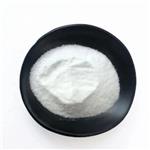
Calcitonin eel
- Product NameCalcitonin eel
- CAS57014-02-5
- CBNumberCB8157135
- MFC146H241N43O47S2
- MW3414.91
- EINECS232-693-2
- MDL NumberMFCD00133858
- MOL File57014-02-5.mol
Chemical Properties
| Density | 1.52±0.1 g/cm3(Predicted) |
| storage temp. | −20°C |
| solubility | Water: 10 mg/ml |
| form | A solid |
| FDA UNII | R5527T0R0U |
Calcitonin eel Price
| Product number | Packaging | Price | Product description | Buy |
|---|---|---|---|---|
| Biosynth Carbosynth FC42995 | 100ug | $65 | Calcitonin eel |
Buy |
| Biosynth Carbosynth FC73303 | 250ug | $87.5 | Calcitonin, eel |
Buy |
| Biosynth Carbosynth FC42995 | 250ug | $130 | Calcitonin eel |
Buy |
| Biosynth Carbosynth FC73303 | 500ug | $150 | Calcitonin, eel |
Buy |
| Biosynth Carbosynth FC42995 | 500ug | $225 | Calcitonin eel |
Buy |
Calcitonin eel Chemical Properties,Usage,Production
Description
Calcitonin eel is a peptide hormone that lowers calcium concentration in the blood. In humans, it is released by thyroid cells and acts to decrease the formation and absorptive activity of osteoclasts. Its role in regulating plasma calcium is much greater in children and in certain diseases than in normal adults. Calcitonin, eel is the thyroid hormone peptide that contributes to the regulation of calcium homeostasis, widely used in the research of postmenopausal osteoporosis.Biological Activity
Calcitonin is hypocalcemic hormone produced by the parafollicular C cells of the thyroid or by the ultimobranchial bodies of nonmammalian vertebrates. Calcitonin decreases blood calcium and phosphate due to inhibition of resorption by osteoblasts and osteocytes.in vitro
Calcitonin, eel effectively induces a concentration-dependent stimulation of phosphoinositide hydrolysis and stimulates prolactin release compared to salmon calcitonin in cultured anterior pituitary cells.Calcitonin, eel is inactive on the inhibition of prolactin release under thyrotropin releasing hormone (TRH) stimulated conditions.
Structure and conformation
Eel calcitonin has structural similarities with salmon calcitonin and, to date, research preparations have been evaluated with reference to the salmon calcitonin standard using the rat hypocalcaemia assay method. However, as salmon and eel calcitonins do have structural differences, which are likely to become evident if different in vivo or in vitro assay methods are used, a standard for eel calcitonin is required.Preparation Products And Raw materials
Calcitonin eel Supplier
Global(147)Suppliers
| Supplier | Tel | Country | ProdList | Advantage | |
|---|---|---|---|---|---|
| +8617531153977 | allison@yan-xi.com | China | 5855 | 58 | |
| +86-0533-2185556 +8617865335152 |
Mandy@hangyubiotech.com | China | 10986 | 58 | |
| +undefined17712220823 | admin@guyunchem.com | China | 615 | 58 | |
| +86-0371-86658258 +8613203830695 |
sales@coreychem.com | China | 29862 | 58 | |
| +86-755-89396905 +86-15013857715 |
admin@nexconn.com | China | 10406 | 58 | |
| +1-631-485-4226 | inquiry@bocsci.com | United States | 19552 | 58 | |
| 0551-65326643 18156095617 |
info@cellmano.com | China | 995 | 58 | |
| +86-13806087780 | sale@simagchem.com | China | 17365 | 58 | |
| +8615255079626 | eric@witopchemical.com | China | 23541 | 58 | |
| +86-29-89586680 +86-15129568250 |
1026@dideu.com | China | 22859 | 58 |
57014-02-5, Calcitonin eelRelated Search
PROMPT×
PROMPT
The What'sApp is temporarily not supported in mainland China
The What'sApp is temporarily not supported in mainland China
Cancel
Determine


